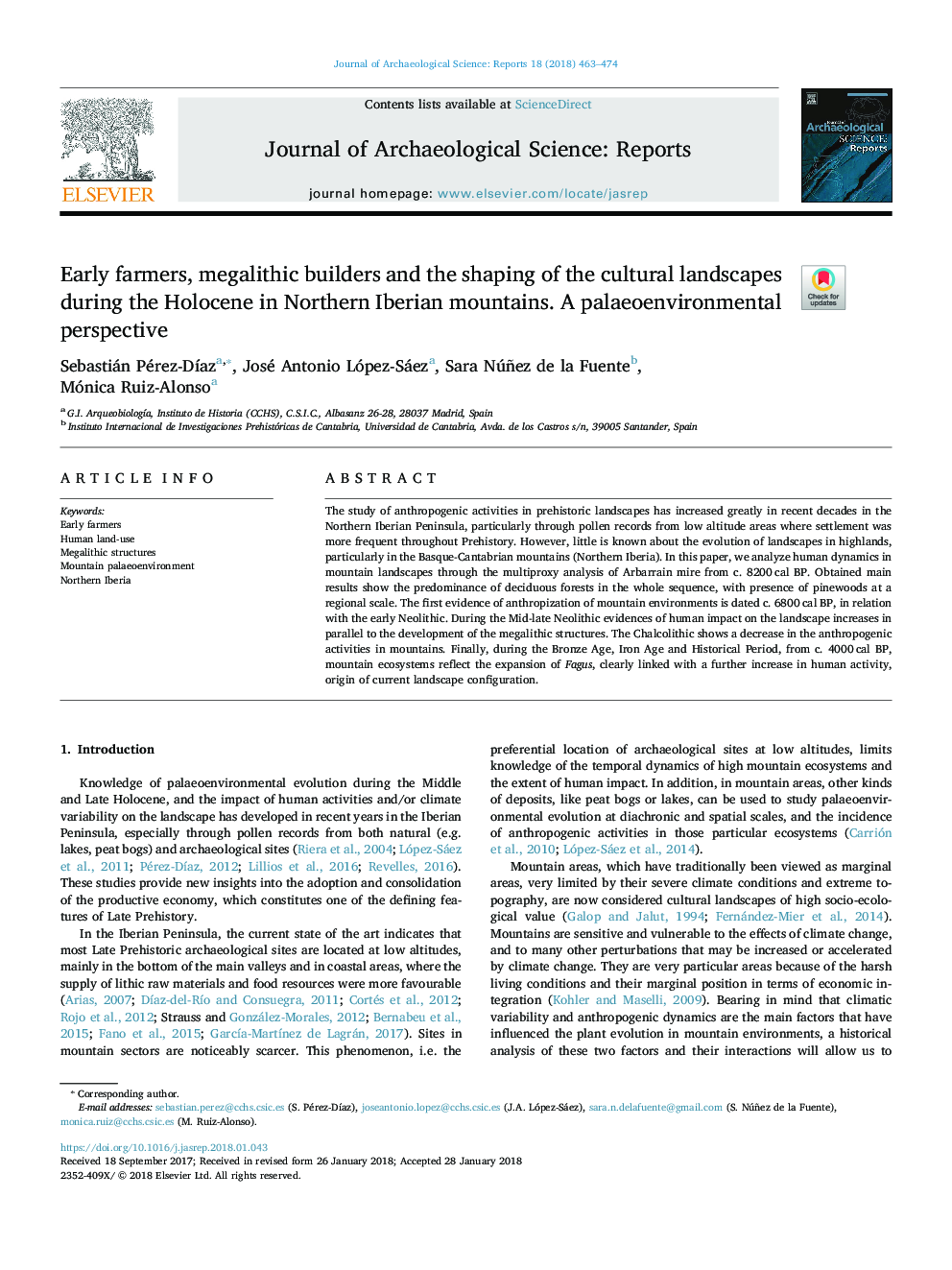| Article ID | Journal | Published Year | Pages | File Type |
|---|---|---|---|---|
| 7445026 | Journal of Archaeological Science: Reports | 2018 | 12 Pages |
Abstract
The study of anthropogenic activities in prehistoric landscapes has increased greatly in recent decades in the Northern Iberian Peninsula, particularly through pollen records from low altitude areas where settlement was more frequent throughout Prehistory. However, little is known about the evolution of landscapes in highlands, particularly in the Basque-Cantabrian mountains (Northern Iberia). In this paper, we analyze human dynamics in mountain landscapes through the multiproxy analysis of Arbarrain mire from c. 8200â¯cal BP. Obtained main results show the predominance of deciduous forests in the whole sequence, with presence of pinewoods at a regional scale. The first evidence of anthropization of mountain environments is dated c. 6800â¯cal BP, in relation with the early Neolithic. During the Mid-late Neolithic evidences of human impact on the landscape increases in parallel to the development of the megalithic structures. The Chalcolithic shows a decrease in the anthropogenic activities in mountains. Finally, during the Bronze Age, Iron Age and Historical Period, from c. 4000â¯cal BP, mountain ecosystems reflect the expansion of Fagus, clearly linked with a further increase in human activity, origin of current landscape configuration.
Keywords
Related Topics
Social Sciences and Humanities
Arts and Humanities
History
Authors
Sebastián Pérez-DÃaz, José Antonio López-Sáez, Sara Núñez de la Fuente, Mónica Ruiz-Alonso,
